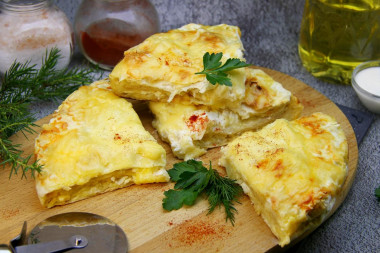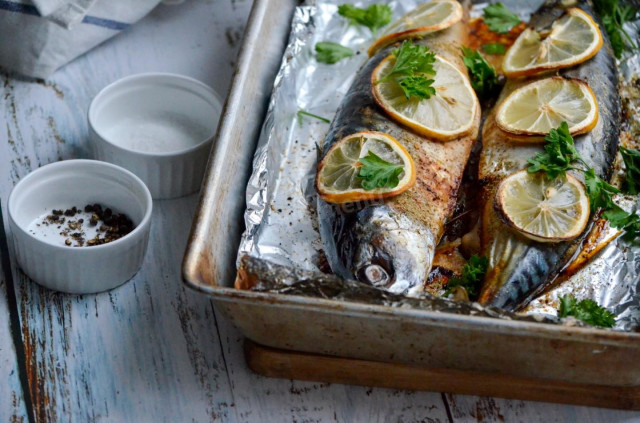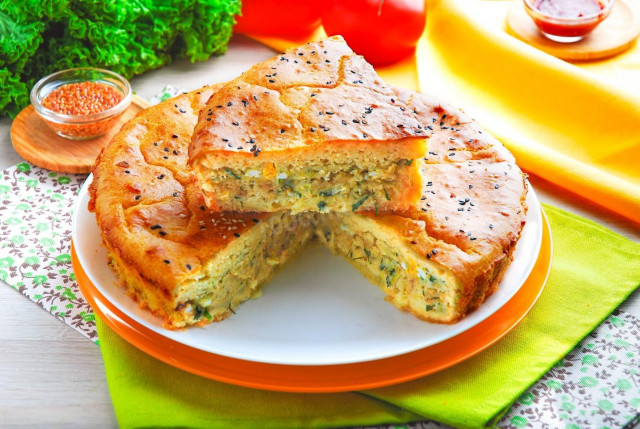Composition / ingredients
Step-by-step cooking
Step 1:

Wash the eggs and put them in a bowl. Add kefir and a pinch of salt. Instead of kefir, you can easily use yogurt in the same amount. Whisk the mixture with a whisk or a regular fork until smooth. There is no need for pomp here, you just need to achieve uniformity of the mixture.
Step 2:
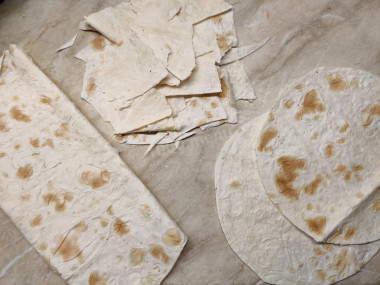
It will take three small sheets of thin pita bread. In total, I got about two hundred grams for all the sheets. One whole sheet should be postponed. From the other two, cut out two blanks in the shape of a circle according to the size of the mold in which the khachapuri will be baked. Just attach a sheet of pita bread to the bottom of the inverted mold and carefully cut out a circle with scissors. The trimmings should be torn into smaller pieces.
Step 3:

Put small pieces of pita bread in a bowl and drown in the egg-kefir mixture.
Step 4:
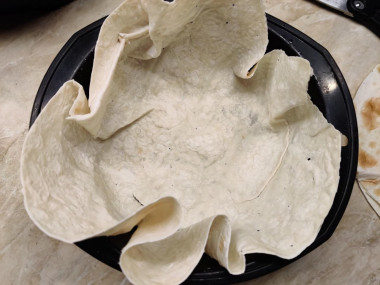
Grease the bottom of the baking dish with a drop of sunflower oil. Distribute a whole sheet of pita bread in the form, leaving allowances for the sides. If the ends are too long, you can carefully cut them off and add them to the filling bowl. I have a shape measuring eighteen centimeters in inner diameter.
Step 5:

Sprinkle the first layer of lavash with one-fourth of the cheese grated on a coarse grater. I have tilsiter. On this layer, you could pour more cheese, I didn't make enough.
Step 6:
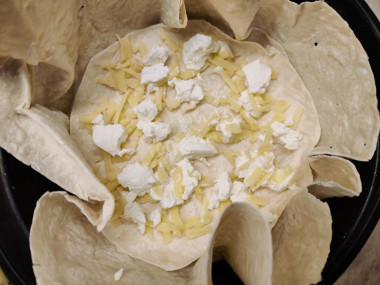
Cover the first layer on top with one of the cut circles. Sprinkle with the second part of the grated cheese and distribute half of the cheese. The cheese should be broken into small pieces beforehand, or crushed into large crumbs, since brine cheeses do not melt even at high temperature. There should not be a mark "processed product" on the package with cheese. This cheese is not suitable for khachapuri.
Step 7:
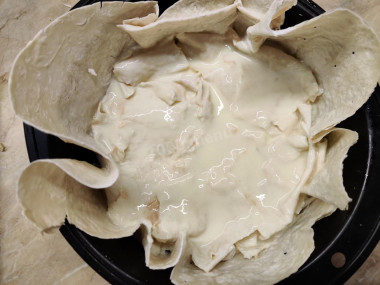
Lay out the pieces of pita bread soaked in egg mixture in the next layer. Save the remaining liquid.
Step 8:

Then distribute the third part of the grated cheese and the second half of the cheese.
Step 9:

Wrap the edges of the first large sheet of lavash inside the khachapuri and press lightly.
Step 10:
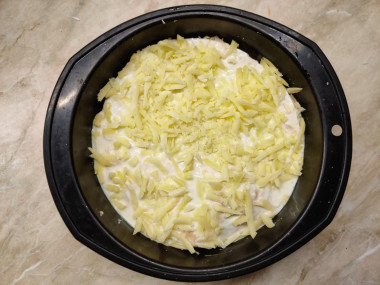
Cover with the second cut circle, pour the remaining filling and sprinkle with the rest of the grated cheese. Bake khachapuri in a preheated oven to two hundred degrees for twenty minutes. Until the cheese melts and an appetizing cheese crust is formed.
Already after cooking khachapuri, the thought came to my mind that there was no special point in cutting circles out of lavash, in fact, there was no. In the finished dish, there will be absolutely no noticeable difference: smooth circles inside, or torn pieces. Therefore, this is a small tip that will help you save a couple of minutes of precious time.
Bon appetit!
Calorie content of the products possible in the composition of the dish
- Chicken egg - 157 kcal/100g
- Egg white - 45 kcal/100g
- Egg powder - 542 kcal/100g
- Egg yolk - 352 kcal/100g
- Ostrich egg - 118 kcal/100g
- Cow's milk cheese - 260 kcal/100g
- Sheep cheese cheese with 50% fat content - 370 kcal/100g
- Dutch cheese - 352 kcal/100g
- Swiss cheese - 335 kcal/100g
- Russian cheese - 366 kcal/100g
- Kostroma cheese - 345 kcal/100g
- Yaroslavsky cheese - 361 kcal/100g
- Altai cheese 50% fat content - 356 kcal/100g
- Soviet cheese - 400 kcal/100g
- Cheese "steppe" - 362 kcal/100g
- Uglich cheese - 347 kcal/100g
- Poshekhonsky cheese - 350 kcal/100g
- Lambert cheese - 377 kcal/100g
- Appnzeller cheese with 50% fat content - 400 kcal/100g
- Chester cheese with 50% fat content - 363 kcal/100g
- Edamer cheese with 40% fat content - 340 kcal/100g
- Cheese with mushrooms of 50% fat content - 395 kcal/100g
- Emmental cheese with 45% fat content - 420 kcal/100g
- Gouda cheese with 45% fat content - 356 kcal/100g
- Aiadeus cheese - 364 kcal/100g
- Dom blanc cheese (semi-hard) - 360 kcal/100g
- Cheese "lo spalmino" - 61 kcal/100g
- Cheese "etorki" (sheep, hard) - 401 kcal/100g
- White cheese - 100 kcal/100g
- Fat yellow cheese - 260 kcal/100g
- Altai cheese - 355 kcal/100g
- Kaunas cheese - 355 kcal/100g
- Latvian cheese - 316 kcal/100g
- Limburger cheese - 327 kcal/100g
- Lithuanian cheese - 250 kcal/100g
- Lake cheese - 350 kcal/100g
- Gruyere cheese - 396 kcal/100g
- Kefir fat - 62 kcal/100g
- Kefir of 1% fat content - 38 kcal/100g
- Low-fat kefir - 30 kcal/100g
- Kefir "doctor beefy" 1,8% fat content - 45 kcal/100g
- Kefir 2.5% fat content - 53 kcal/100g
- Vegetable oil - 873 kcal/100g
- Armenian lavash - 236 kcal/100g
- Lavash - 277 kcal/100g
- Salt - 0 kcal/100g



